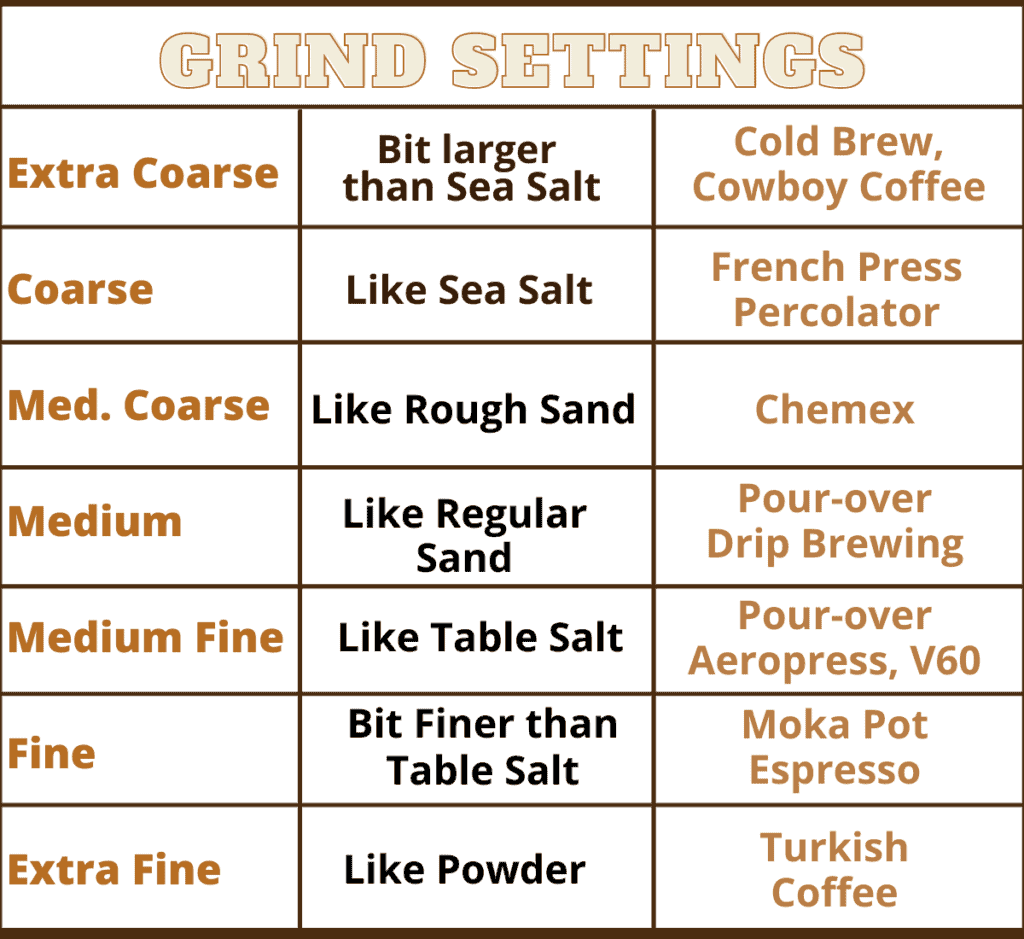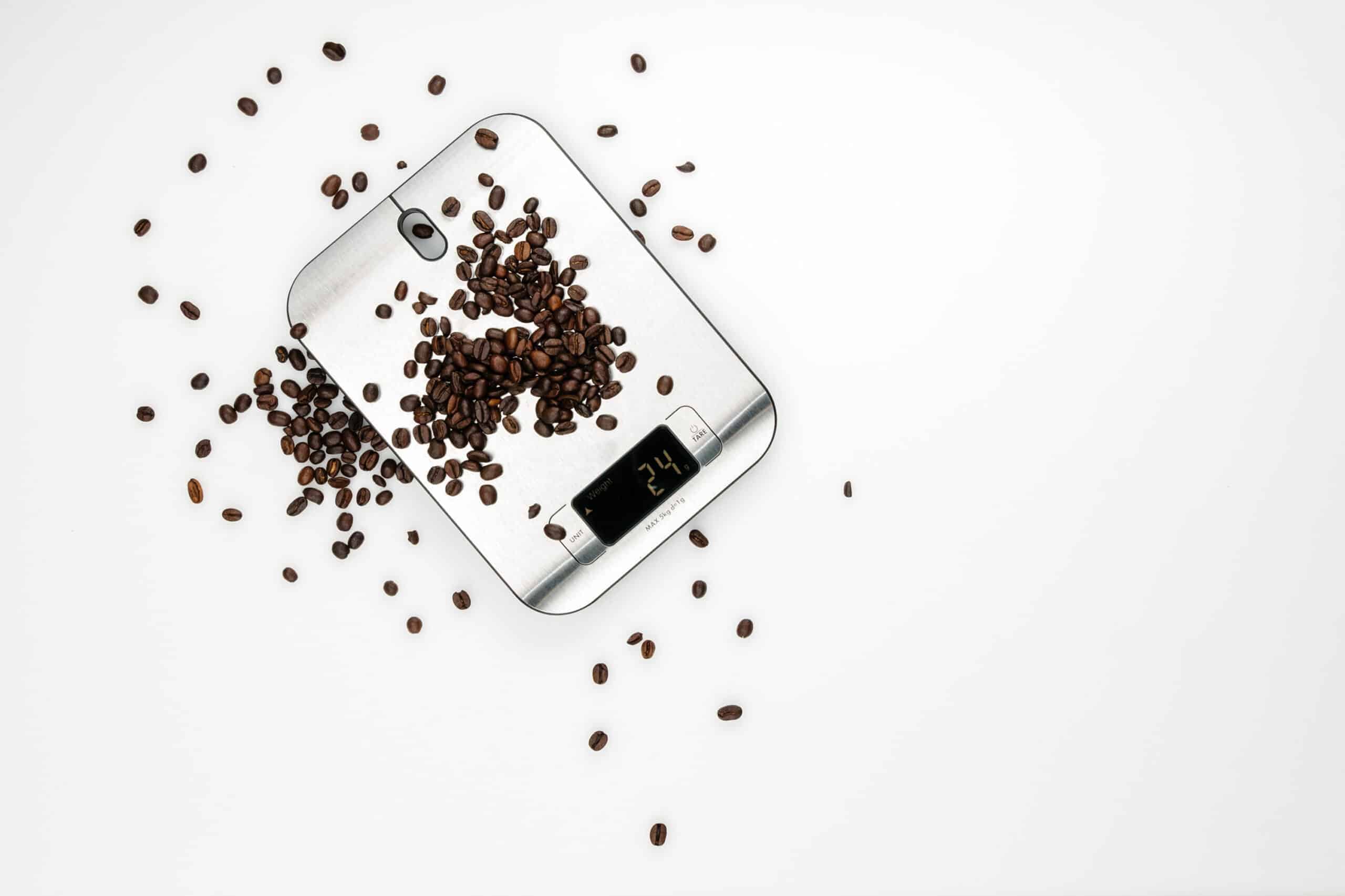When it comes to making your coffee at home, you seem to start accumulating equipment once you get into it including a scale and coffee grinder.
But, here’s the question. Which do you weigh; your whole bean coffee or your coffee grounds? You’re weighing your coffee (and presumably water) because you have a brew recipe. But what came first; the chicken or the egg, or in this case – the weighing or the grinding.
Do you weigh coffee before or after grinding? If you’re doing things correctly, both. Weigh the coffee before grinding it, so you’re only using the amount you need. Once it’s ground, you should then recheck the weight, as some grinders retain a bit of coffee, or worse, there was a bit of old coffee left in your grinder, and you have too much.
This post will be for those who want to get their coffee just right. When paying attention to the small details, you’re rewarded with an even more delicious cup of coffee.
Why do you Weigh Coffee?
Like you would weigh your flour when baking a cake, you should weigh your coffee with a coffee scale. If you have a recipe, you can replicate it and get the same results each time you make it.
So, the first time you make a coffee you know you use 15g of coffee. If it was too weak, too strong, or just perfect, you know whether to use less, more, or the same amount next time.
Also, the closer you grind your coffee to using it, the better. As soon as coffee is ground and exposed to air, light, and moisture, it will start to degrade quickly. So if you can grind precisely the amount you need, you can eliminate any waste of coffee.
Should you Weigh the Water too?
Absolutely, you should weigh your water. There are only two ingredients in coffee brewing (I’ve not forgotten milk, but that comes later). Coffee and water. The same principle applies to water. The coffee I brewed on my pour over this morning had a recipe of 16g of coffee to 240g of water.
Do I Weigh the Water Before I Pour it on the Coffee or During?
You can weigh the amount of water before or during. If you’re pouring straight from the kettle you boiled the water in, then it’s easiest to weigh as you brew. Also, you will probably not pour all the water in one go. You will want to pour a particular volume each time, so you’ll have your brewer on the scales anyway.
However, if you’re pouring from a different kettle to the one you boiled your water in, or you’re just terrible at stopping at the right amount, weighing out the correct volume of water before you start is fine.
Weighing Coffee and Water Using Math
Maybe you’re saying to yourself “Why do I need to use math when making coffee when I can just taste to see if it’s good?” The truth is I didn’t like the idea of having to do some math when making a coffee, especially ratios.
Once I took a little time to understand it, I realized weighing the grounds is better than merely using a scoop or tablespoon of coffee. It made coffee making much tastier, quicker, and easier.
To explain more let us take my filter coffee this morning as an example: 16g coffee to 240g water. Now for the ratio bit. For each gram of coffee that I use, I require 15g of water. That’s a ratio of 1:15.
So if I wanted 1.5 cups of coffee, I would need 24g of coffee (16 + (16/2) = 24g). Then, multiply 24 by 15 to get how much water I would need (360g).

Now, let’s say you have a coffee mug that holds 350g of water. You can also work the ratio problem backwards to see how much coffee grounds you would need. For 350g of water, you divide it by 15, to get 23.3g of coffee. You will need 23.3 grams of coffee for you 350 grams of water.

The best part about this is when you find you have only 13g of coffee at the end of the bag, you now have the skills to make a mini coffee (195g), which is much better than a full cup of substandard coffee.
For more information on what is the best coffee to water ratio, check out our other article here!
It’s important to note that when making espressos, the same principles apply as with filter coffee although you may have to play around with the ratio. Let’s talk a bit more about grind size in the next section.
Coffee Scales
Coffee scales are an excellent way to ensure your cup of coffee tastes the same every time you make it.
Weighing your coffee will help with…
- improving the taste
- precision
- consistency
- eliminating coffee waste
To read more on how scales help with these 4 aspects, click here.
Top Scales For Coffee
When measuring ground coffee, choose a scale that measures in grams, not ounces. Due to the small amount of beans typically used at home for a single cup or up to 8 cups of coffee, a scale that measures in grams will be more accurate.
Digital scales are also a life-saver when it comes to reading scales. Lastly, it’s beneficial to purchase a coffee scale that is small and compact. Whether you store it on your counter or in your cupboard, no one wants a bulky scale taking up space.
Below are some of our favorite coffee scales available to purchase on Amazon.
Salter Digital Kitchen Scale
These were the first scales I ever used for brewing coffee. I bought them because they were on sale in my local store for a discount. You do need digital scales for coffee, and although these are not ideal because you can only measure to the nearest gram (ideally, we want 0.5g as a minimum), they are a great value.
The Salter Digital Kitchen Scale is simple to use, weighs up to 5kg (so you can also use it as your standard kitchen scale), and handles a spill. They’re also 18cm long, so plenty of room if you’re brewing coffee into a jug or Chemex.
Hario V60 Drip Coffee Scale and Timer
The Hario Scale is minimalistic in function and design. It’s built for precise measurements, up to 0.1g of accuracy, and comes with a built-in timer for perfect bloom times and pours each time. I love how it includes an auto-off function after 5 minutes of no use, which is great to save on battery life.
The negatives to this scale are that it cannot get wet and has a slightly slower response time when adding coffee beans, so you have to move slower when pouring them. If you are like me and often in a rush in the mornings, this may cause you some frustration.
Grind Setting and Brew Method
Coffee grind is mostly determined by the brew device you are using. And the extraction of the coffee grounds will be different for each. There are a variety of different ways to brew coffee, each warranting a certain grind size. Take a look at the table below for a quick reference.
Weighing coffee is also essential because the grind size will be different for whichever brew method you’re using.
An extra coarse grind is going to be used when making a cold brew or cowboy coffee.
A coarse grind, like sea salt, will be used for a French Press or Percolator.
A medium coarse grind will be used for a Chemex.
Medium grind, like sand, will be used for a pour-over to drip brewing.
A medium fine grind, like table salt, will be used for Aeropress or a V60.
A finer grind will be used or a Moka Pot or espresso.
And lastly, an extra fine grind will be used in making Turkish coffee.
Related Reading: How fine should you grind coffee beans?

Grinding and Weighing Coffee in a Cafe
As a general rule of thumb, the more coffee weighing you see in a café, the better your coffee will be. I would expect to see the weighing and grinding principles I have already mentioned with filter coffee. With espressos, I would expect to see a similar process.
Most good cafes now have on-demand grinders which accurately release a programmable dose of ground coffee in a matter of seconds. The barista will then check the weight of this dose, and often add or remove some of the ground, so it’s within +/- 0.2g of their recipe amount.
They will also weigh the espresso as it comes from the espresso machine (some espresso machines now have inbuilt scales for this) to check that it’s also the volume they’re looking for. My starting ratio for espresso is a 1:2 ratio, so for example, 18g of ground coffee to 36g of espresso.
Does all Coffee Weigh the Same?
Excellent question. No, and here are some reasons why. Green coffee beans (the seed from inside a coffee cherry) are just like apples or carrots – no two beans are identical in shape or size. Beans also lose moisture when they’re roasted. So roast time and roast temperature can have a significant effect.
However, all coffee beans (and ground) are sold by weight, so a 250g bag of coffee always weighs 250g. This all feels a bit complicated, but in truth, I’ve never looked in a 250g bag of coffee and noticed a considerable variation in volume, so it’s good to know, but nothing to worry about.
Grinding Your Coffee
What is the proper way to grind coffee beans? The appropriate way to grind coffee beans is to use a burr coffee grinder. You then want to set your coffee grinder to the correct coarseness and only grind what you use.
You want to grind your coffee beans just before using them and then store them in an airtight container until you need them next. Grinding your coffee in advance will result in a subpar cup of coffee as the coffee beans degrade much more quickly. It’s recommended to use a good-quality burr grinder for consistency and uniformity.
Click the link to read more on the right way to grind your coffee beans.
Final Thoughts
Hopefully, you aren’t completely confused about water and coffee ratios after reading this article. It really isn’t that difficult once you’ve done it a couple times, and takes the guess work out of brewing that perfect cup of coffee.
